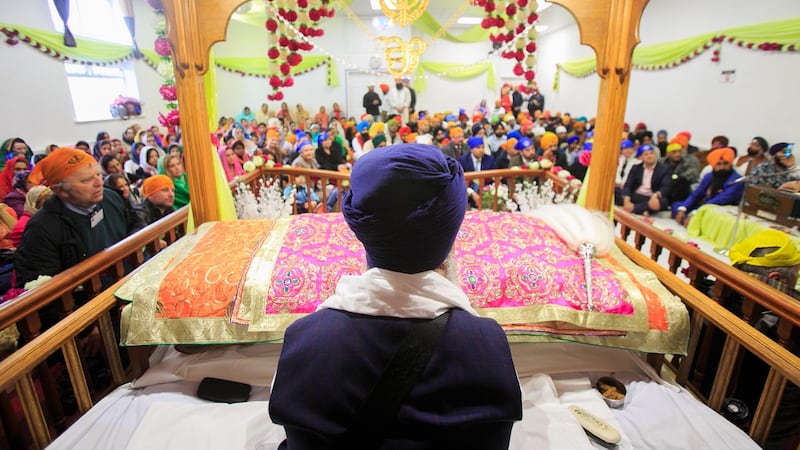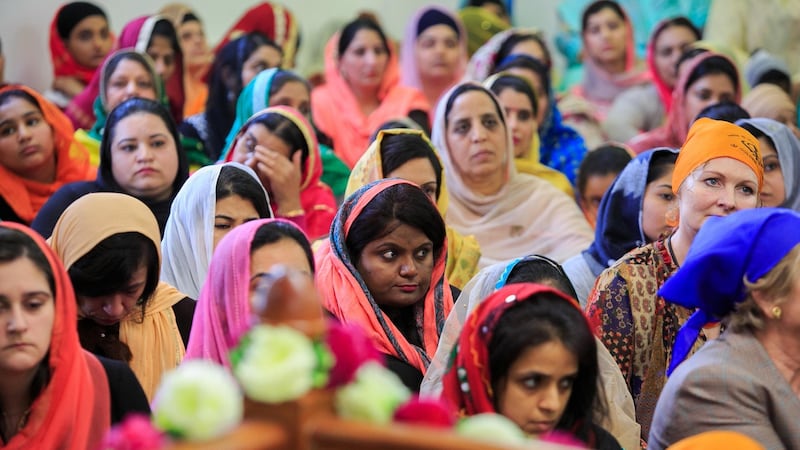If it was a coincidence that all the senior Fine Gael figures who visited the Sikh temple on Sandymount's Serpentine Avenue on Sunday afternoon to mark the harvest festival of Vaisakhi were wearing blue headgear, it was a most happy one admitted the Minister for Housing Eoghan Murphy.
Sikh custom dictates that both men and women must wear either head scarves or turbans before entering temples and while there were multiple colours to choose from, Murphy, Taoiseach Leo Varadkar and the former minister for justice Frances Fitzgerald all opted for bright blue head scarves before the ceremony got under way.
“I am very glad they are blue because it’s a Fine Gael colour,” the Minister told the festively relaxed gathering.

Among those in attendance was Dr Hemant Kumar who has a medical practice in Lucan. He told The Irish Times that the festival was very important for three reasons.
"First it is the harvest festival in northern India and secondly it marks the birth of Khalsa", a foundation event in the Sikh tradition which dates back to 1699.
He also noted that this weekend's celebrations coincided with the centenary of the Amritsar massacre in which 379 Sikhs were shot dead and a further 1,500 wounded by British forces led by Brigadier-General Reginald Dyer, a man educated at Midleton College in Co Cork.
“In many ways it was from that point that the independence movement in India really started so the blood of those innocent people was not shed in vain,” he said.

Ruldip Singh was one of the founding fathers of what is the only Sikh temple in the Republic and he recalled its genesis. "In 1985, I was contacted by an estate agent I knew and he told me that theatre in Sandymount was for sale. The price was £50,000 but that was a lot of money back then."
The small community of Sikhs managed to raise the funds and when the temple first opened its doors there were “maybe 10 or 20 practising Sikhs but that number has swelled to between 300 and 400 today”, he said.
Ms Fitzgerald said the community and event it was celebrating illustrated why both integration and “the preservation of unique cultures was so important”.
She said the event was more filled with emotion this year because it fell on the day after the centenary of the Amritsar massacre which, she said, “particularly resonates here because of our shared colonial past”.
Most if not all of the practising Sikhs were gathered in the temple when the time came for the Taoiseach to address them. He expressed pride at the diversity of Ireland in the 21st century and noted that the Republic had managed to avoid "some of the ugliness that has been unleashed in the United States, the United Kingdom and in some parts of Europe" and he cautioned that ignorance and fear could "spread like a contagion".
Also present was the Indian ambassador to Ireland Sandeep Kumar who echoed the Taoiseach’s words when he described Ireland as “one of the most open, tolerant and accepting countries in the world”.
After which the gathering were shown to another room where they were served a small meal of lentils dhal, chapati flat bread and a dessert. “It is very, very sweet,” one of the servers whispered as he prepared the Taoiseach’s tray. “I hope he likes it.”
Judging the way he wolfed it down, he liked it quite a lot.

















